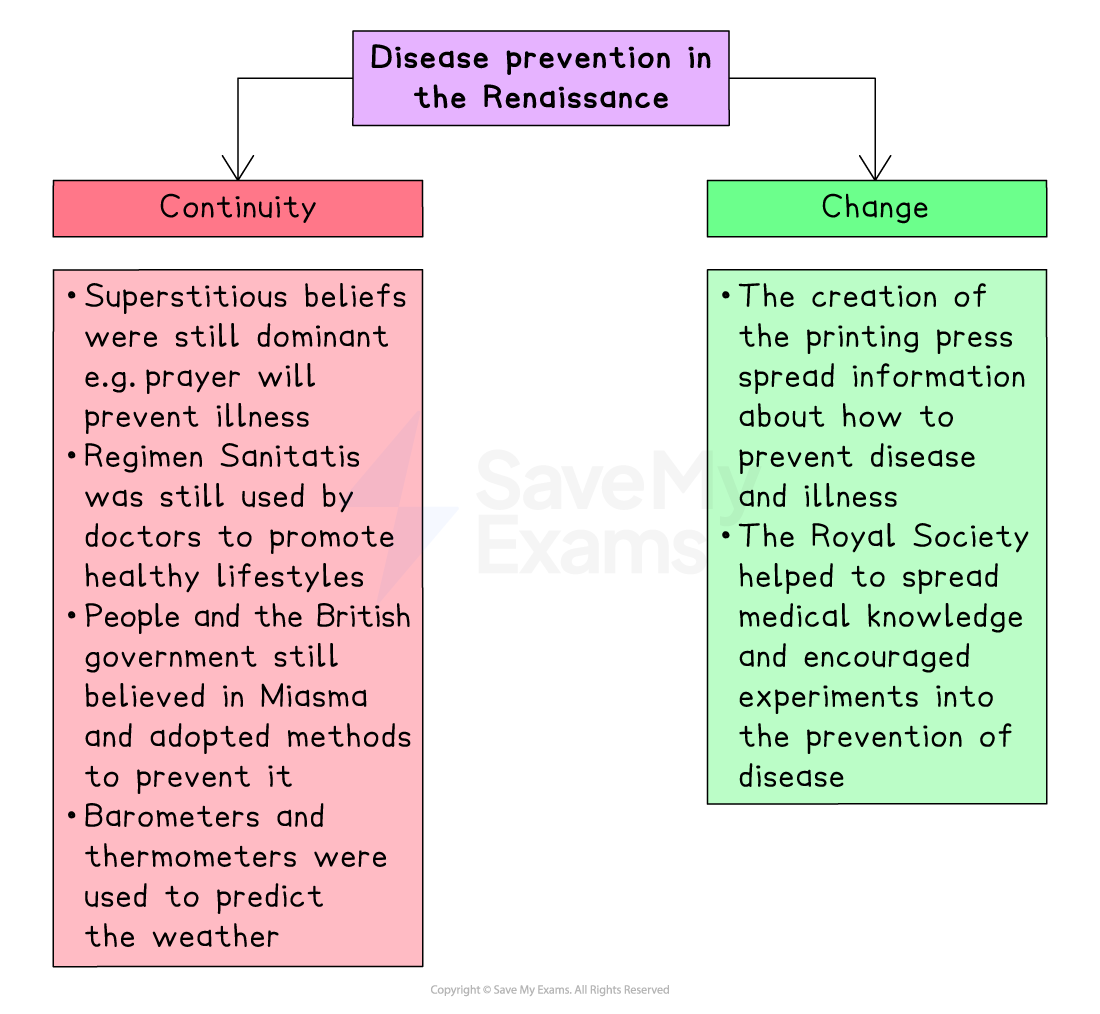Prevention of Disease in Renaissance Britain (Edexcel GCSE History): Revision Note
Exam code: 1HI0
Continuity of ideas about disease prevention in the Renaissance - Summary
Methods of prevention changed little between the medieval and Renaissance periods
Without an understanding of germs, people did not know how to avoid catching diseases
People still believed that religion was the key to staying healthy
The general population prayed and lived a morally good life to prevent illness
In times of epidemics, such as the Great Plague of 1665, the use of supernatural preventions only increased
However, science and observation began to influence people’s behaviour
People watched what they ate
Pre-existing, logical theories became more accepted, such as miasma
Superstitions
People still believed that the supernatural influenced their health
Many people prayed in an attempt to prevent illness
More rational ideas grew in influence, such as:
Eating in moderation
Considering how strong you were when you were born (a person’s constitution)
Regimen Sanitatis
Many people continued the practices outlined in Regimen Sanitatis to keep themselves healthy
Cleanliness was fundamental in disease prevention
However, bathing became less popular by the 16th century because:
Many stewes (public baths) were also brothels
Diseases such as syphilis spread quickly in the stewes
To maintain better health and cleanliness, people:
Changed their clothes more often
Moved away from areas with disease
Miasma & weather conditions
Miasma
Local governments targeted the removal of miasma
Minor criminals picked up rubbish from the streets as punishment
Fines were given to homeowners who did not clean up outside their houses
Projects to drain swamps and bogs were set up
Weather conditions
The idea that weather conditions could spread disease became more popular in the Renaissance
Barometers and thermometers tracked pressure and temperature
Hot summers were linked to a higher risk of disease, such as plague

Worked Example
Explain one way in which prevention of illness in the years c1250-c1500 was different to prevention of illness in the years c1500-c1700
4 marks
Answers:
One way in which prevention of disease was different from the Medieval period to the Renaissance was an increased focus on rational solutions (1). In the Medieval period, the Church was very powerful (1). Therefore, people used supernatural prevention, such as regular prayer and confession, to attempt to stay well (1). However, in the Renaissance, the power of the Church was in decline. Many now looked into logical methods of prevention, such as eating in moderation and considering a person’s constitution (1).
Examiner Tips and Tricks
When answering ‘Explain one way…’ questions, try to be as specific as you can in your examples. Pick a detailed feature of each time period that matches the difference or similarity you have highlighted. Being specific is much better than using multiple pieces of evidence

Unlock more, it's free!
Did this page help you?